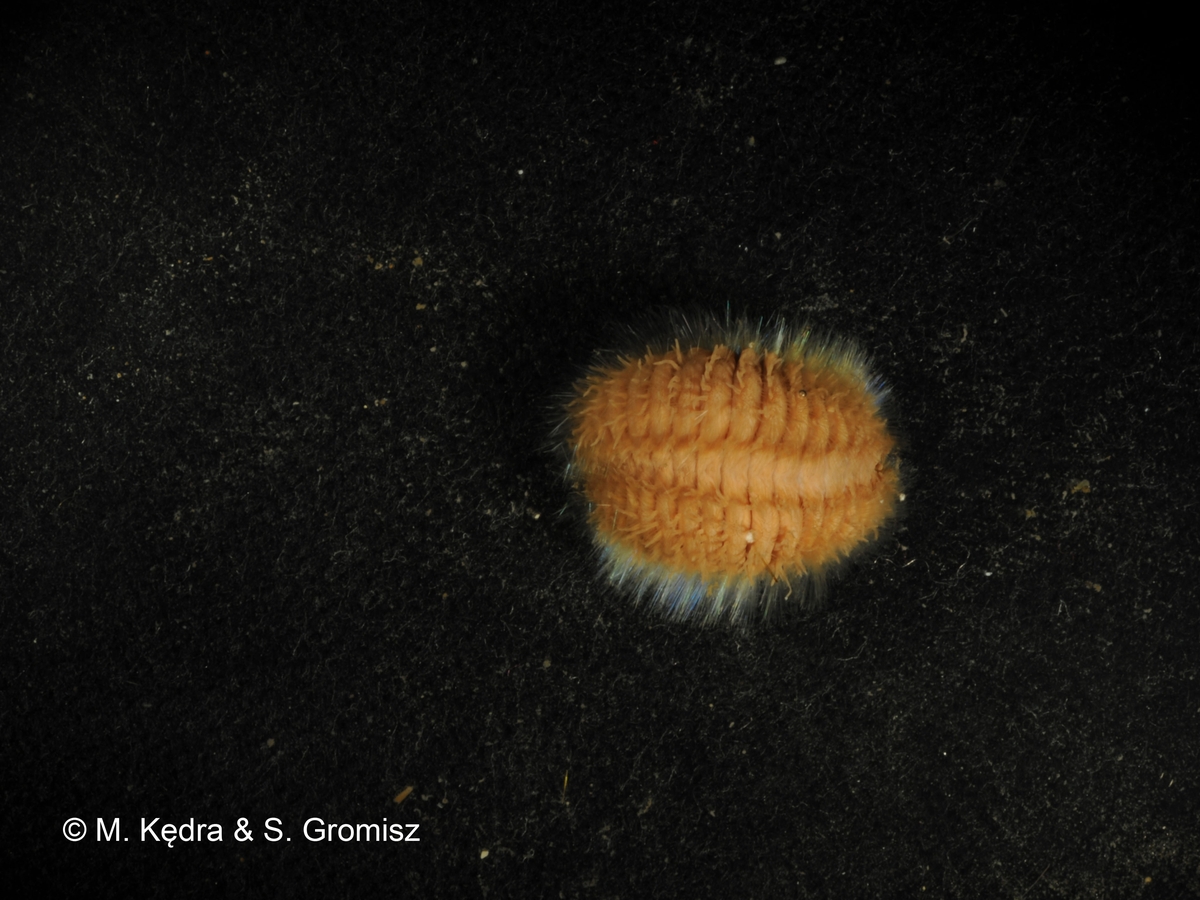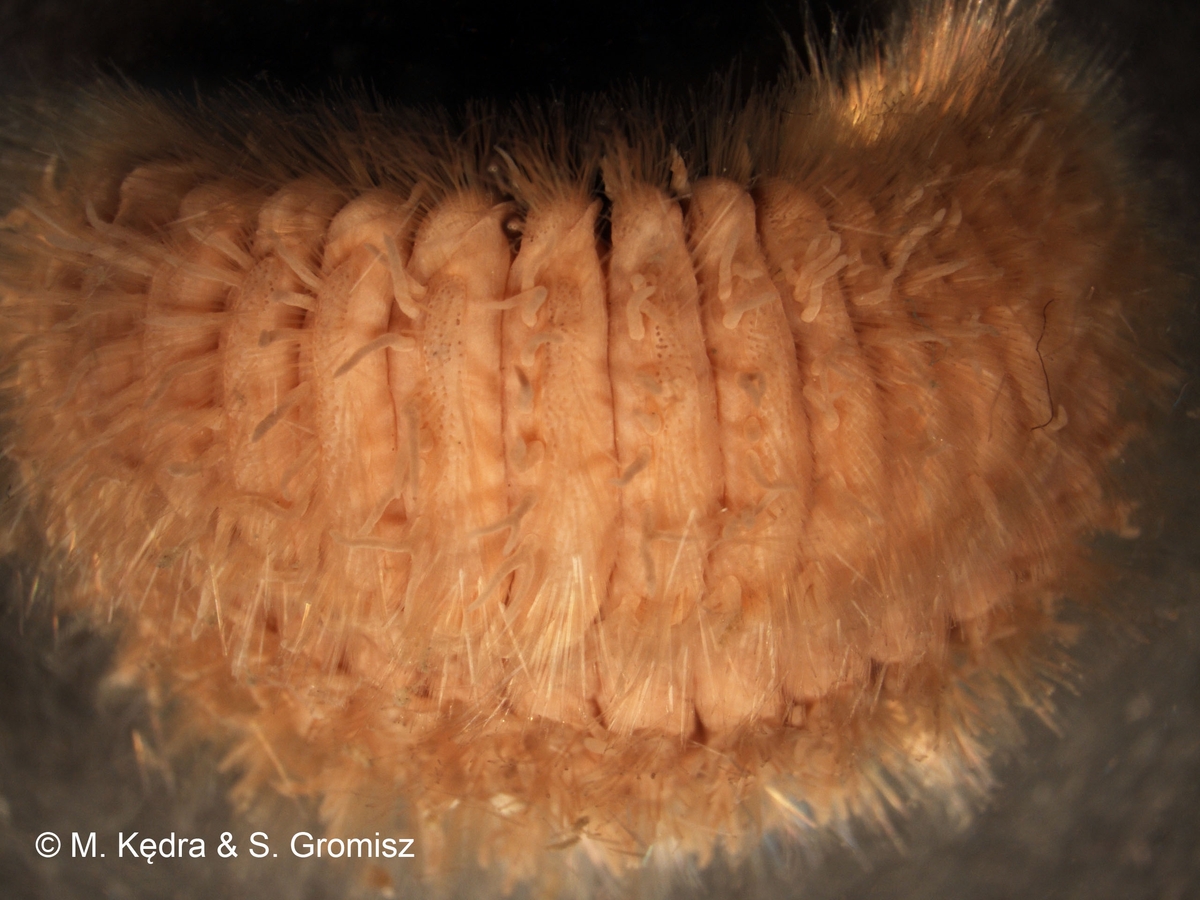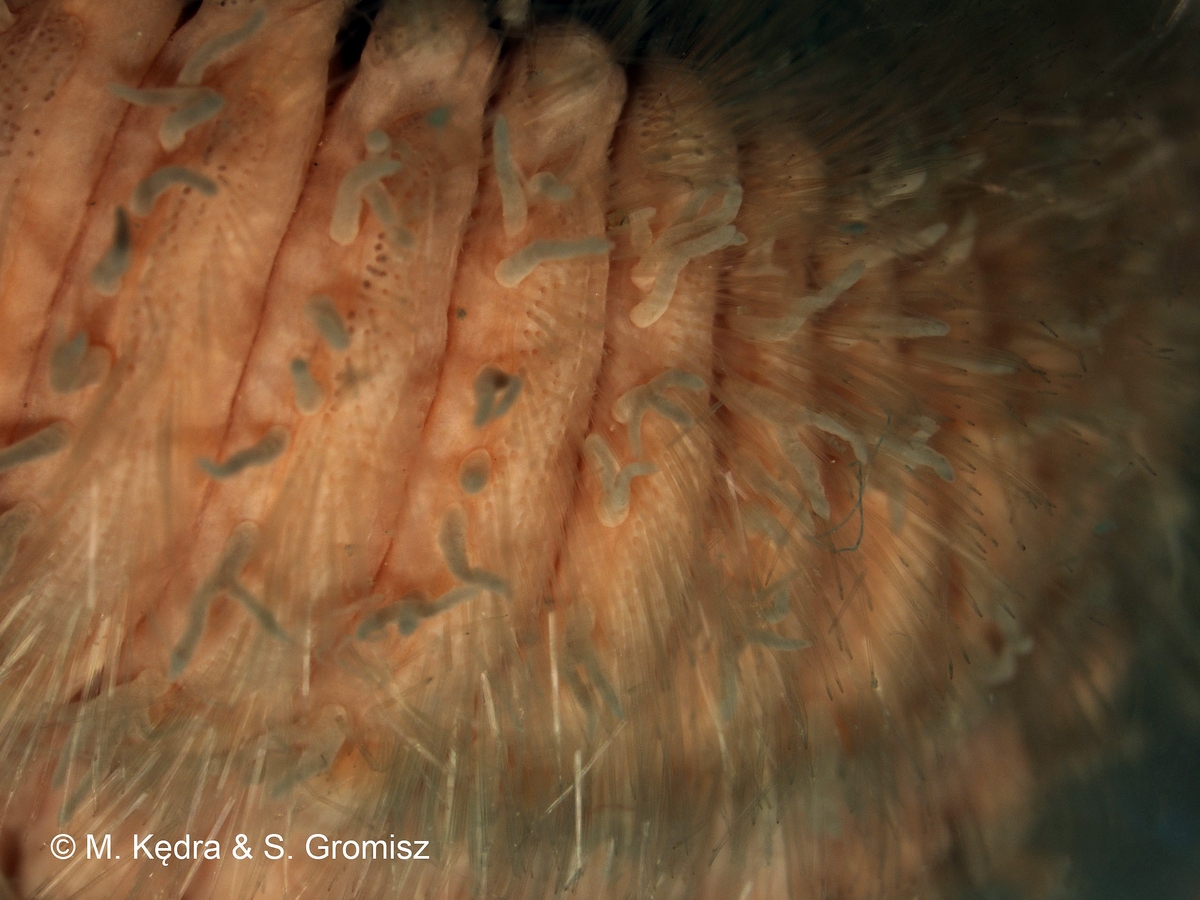Euphrosine borealis Örsted, 1843

|

|

|
Euphrosine lanceolata McIntosh, 1876
Euphrosyne longisetis Treadwell, 1939
Distinguishing characteristics
Dorsal surface nearly covered with notopodial chaetae.
6 to 9 branchiae with usually 2-4 branches in notopodium.
Species description
Body with 24-31 segments. Two large eyes and 2 smaller ones ventrally. Caruncle extending posteriorly to chaetiger 5. Dorsal surface nearly covered with notopodial chaetae, with only a narrow mid-dorsal region without chaetae. Each notopodium with 6 to 9 branchiae, each with 1-12 (usually 2-4) branches. 2 dorsal cirri. Two kind of notochaetae: long smooth chaetae with a short lateral spur and shorter, unequally forked, serrated chaetae. Neurochaetae with short lateral spur, smooth.
Size
Up to 26 mm.
Color
Habitat
In sand, gravel, stones, rocks and mud. From the intertidal zone to depths of more than 1400 m.
Mobility
Mobile.
Feeding
Predator. Scavenger. Omnivore.
Life cycle
Distribution
Widespread in Arctic, North Pacific and North Atlantic, including the northern part of the North Sea.

